Elite’s consumerism cult to fall first victim of luxury goods taxation in Russia
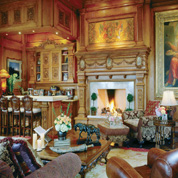
Indeed, if one was to assess the degrees of reaching the goals set at the beginning of the transition from communism to capitalism over 20 years ago, one could conclude that post-Soviet Russia, more specifically, the part that is traditionally referred to as superrich or ‘nouveau riche,’ has achieved unparalleled results in consumerism, having turned its ascetic lifestyles and consumer behaviors around through 180 degrees.
Indeed, in the past two decades, Russia has had difficulties in working its way into or obtaining membership in respected global organizations, such as the G8, WTO and other decent international associations. However, in the elite global club of countries with super luxury items consumers, Russia is not just a simple ordinary member, but one of the leaders and trendsetters on the global market for luxury items carrying price tags in six- or seven-digit figures. Today, the so-called ‘new caste of Russian moneybags’ always leave behind them legendary stories of incredible extravagance and unprecedented lavishness on their regular shopping tours in foreign countries that can only be equaled or excelled by the Arab sheikhs.
The uniqueness of Russian consumerism
However, the uniqueness of the paradox of Russian consumerism lays in the fact that in other countries this type of consumer behavior is characteristic of the superrich that are traditionally from noble genealogies or hereditary offspring of wealthy dynasties or the so-called self-made millionaires and billionaires. This time-tested global practice contrasts sharply with the situation of the Russian superrich that have gained their super-wealthy status in an unprecedentedly short period of time. Indeed, this category of Russian citizens practically rose from the proverbial grass under communism to grace in the era of initial capital accumulation, better know as the period of the wild model of post-soviet Russian capitalism that was built on the ruins of the Soviet industrial power in the 1990s. The swiftness of their personal enrichment and transformation in lifestyles and consumer behaviors can, perhaps, only be matched by the leaders of the world’s most obnoxious authoritarian dictatorship regimes and their closest inner circles, who traditionally use their public treasuries as their own private wallets.
“In the elite global club of countries with super luxury items consumers, Russia is not just an ordinary member, but one of the trendsetters on the global market for goods and services carrying price tags in six- or seven-digit figures.”
However, it seems that the new social and political realities in today’s Russia, notably, the rising political activities of the representatives of the middle class, who have revolted against the existing status-quo, have forced the government to change its traditional apathetic attitude to the ongoing crystallization of the cult of consumerism. Indeed, in Russia, the stratification of the society in terms of financial prosperity has long reached unacceptable proportions for a member of the elite club of G8 nations as Russia. Undeniably, the level of social stratification is so high that it now poses tangible threat to the stability of the state.
The government’s combat readiness to take decisive actions against these negative trends became clear in February, when Prime Minister Vladimir Putin, then a presidential candidate, told a gathering of Russian business leaders that the question of imposing a luxury tax ‘is politically done deal,’ adding that all that is left is the adoption of the relevant legislative base to put it into action. In other words, the Kremlin has set a strict course for fighting the key factors that are fuelling the growth of these negative trends. In this regard, the luxury taxation is to go hand-in-hand together with the Kremlin’s new and stricter measures for policing over all the bureaucrats’ revenues and expenditures. These two revolutionary ideas in Russia will certainly help rein in the ugly practice of provocative wealth demonstrations by a selected few in a nation, where over 65% of citizens are classified as ‘poor and extremely poor.’
According to experts, the luxury tax will only affect up to 5-10% of citizens, which in numerical terms, equals about 7mln-14mln people with superlative incomes out of the nation’s estimated population of about 140mln. Besides, according to the data complied by the Just Russia political party, one of the initiators of the luxury tax, there are about 200,000 luxury real estate properties, about 24,000 cars that qualify as luxury vehicles, whose prices vary from 3mln-5mln rubles for expensive foreign auto brands, to sky-high 20mln-60mln rubles for supercars and other exclusive auto brands. Though there is no accurate statistics on the number of yachts, private jets, etc., yet these luxury items have a relatively bigger taxable base than the previous two categories, consequently, the volume of collectable taxes on these goods will effortlessly run into tens or even hundreds of billions of rubles per year.
It is, therefore, clear that besides the correction of the existing bias in the social stratification index, the Kremlin has a concrete material benefit from the introduction of this policy. For instance, according to the most conservative estimates, the adoption of the luxury tax can generate a minimum of 200bln-300bln rubles for the state every year. However, in case of a more conscientious attitude by the potential payers of this tax, meaning the superrich, and a much stricter enforcement approach by the fiscal authorities toward the collection of this tax, then the amount of additionally generated revenue can, at least, more than double the above-stated figures to peg at 400bln-600bln rubles, or even triple to about a trillion rubles. In other words, the Russian budget will annually gain an additional revenue equivalent to about 10% of the country’s GDP.

This may help explain the reason for the haste in the actions of the government to impose the tax as soonest as possible, if not throughout the entire country at once, but at least, in some regions as a ‘test pilot’ program. “The luxury tax will be imposed in Russia in 2013 specifically on mainly expensive real-estate properties, yachts and cars, and will be calculable on the basis of their real market values,” Russian Finance Minister Anton Siluanov noted. “We still have the time to work out the parameters of the tax and define the luxury items that will be subject to this type of taxation.”
In search of conclusive luxury criteria
As the citizens’ opinions on what really constitutes a luxury in the country differ broadly, the first and foremost task which the Kremlin faces is working out a clear and economically justified concept of luxury and the items, which by virtues of their prices, aesthetic values and other quantifiable properties and non-quantifiable attributes, can objectively come under this label. Another task, which is not less important, is the necessity of working out the modality for the introduction of the so-called ‘geographic differential coefficients’ on these luxury items that will the locations or the regions of residence of these items owners into the taxation formula. This is because the market value of a multi-roomed and multi-floored flat or a penthouse with an area of 300sqm in downtown Moscow conspicuously differs from the value of a similar property in the nearby Moscow Region and much more expensive those in the country’s more remote regions.
The introduction of such a coefficient is necessitated not only by the objective reality in the differences in standards of living in Russian regions, but also by the results of the various opinion polls. For instance, in March, the Russian Public Opinion Research Center (VTsIOM) carried out polls, according to which almost 70% of the citizens were in favor of the introduction of the luxury tax, whilst their concepts of a “luxury” differed dramatically or is associated with different things in different regions. If the laypeople’s views, the interpretations, wishes and recommendations of the various public organizations, ministries, etc. are taken into condition, then the concept of a luxury in Russia becomes a totally incomprehensible phenomenon.
For instance, according to the VTsIOM’s March polls data, Muscovites associate ‘luxury items’ with private jets, elite real-estate properties, exclusive cars, unique works art and other expensive adult “toys” worth several million in ruble, US dollar or euro denominations. However, for residents of the most remote regions, luxury items are often associated with medium-priced jewelries, relatively inexpensive foreign-made cars and other ‘ordinary items’ in larger cities such as designer clothes, shoes, bags, etc.
To help people determine their wealth status, a popular blogger Dmitry Ternovsky, known for his Country without Nonsense project, has recently launched an online People’s Wealth Calculator, which has become a hit among the Runet users. Thus, every citizen can check the level of his/her financial welfare, whether or not he/she falls into the ‘special caste of superrich Russians,’ and if so, what will be the implication of this tax to him/her, if it will be eventually adopted. Similarly, the Russian Union of Industrialists and Entrepreneurs (RSPP), acting within the social mandate received from Putin at a meeting with the nation’s business leaders, has also set out to help the Kremlin solve the problem of determining the maximum wealth that will come under the jurisdiction of this taxation, the organization’s president, Alexander Shokhin, noted.
Thus, according to the RSPP experts, the tax will only affect people in super-high income bracket and will not even affect the wealthiest top level of the middle class, talk less of the least financially secured citizens. Consequently, the RSPP’s round table discussion experts proposed a three categories classification of super incomes that will be subject to this special luxury tax, Shokhin noted. “It is agreed that the luxury tax will not only be imposed on superrich individuals, but also on the legal entities and state officials, notably, those overseeing state orders, so as to make that they are not using the state money to buy luxury items for themselves,” he added. “Also, it is necessary to understand that a luxury tax is not a single tax. This is why it is necessary to have a system for reforming the existing taxes that will foster a more effective realization of this idea of slapping a special taxation on super consumption. – Indeed, if somebody decides to his/her spend money on ‘demonstrative’ consumption, instead of investing into something, then he/she has to pay for it, in this case, via a luxury tax.”
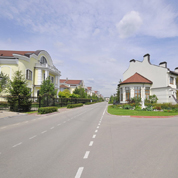
After an extensive discussion, the RSPP worked out the following recommendations for the Russian government: a luxury residence — an apartment or a house — is any elite real-estate property with an area ranging from 300sqm in any Russian city and 500sqm outside a city, or any real-estate property valued at 50mln rubles or more. For cars, the minimum limit of luxury starts from 3mln-4mln rubles and an engine volume of 400 horsepower. For private land plots, the level of luxury starts from 50 hectares. David Jakobashvili, the chairman of the Russian Milk Industry Entrepreneurs Union, commenting on the necessity of development of distinct and unambiguous parameters, said such a definition will serve to exclude the possibility of corruption among officials that will implement the laws. “In other words, if a selective approach and ambiguous definitions are used, this will increase the premises for corruption,” the entrepreneur, who was one of the founders of the Wimm-Bill-Dann group of companies, added.
However, strangely enough, the RSPP, which, by the way, is satirically called ‘the trade union of the oligarchs,’ that is the superlatively rich persons that are the prime targets of the luxury taxation, was unable to work out the ‘degree of luxury’ of yachts, private jets and other super expensive toys for typical moneybags. One of the reasons was the fact that only one private business-class jet and just four yachts are officially registered in the whole of Moscow. It seems the rest of the ‘army’ of private yachts or jets dotting the Moscow waterways and airspaces were registered in various offshore locations in order to even evade the current minimal taxes on these assets in Russia. In all appearances, the noble gentlemen from the RSPP club want the ordinary Russians to believe that all the super-expensive private boats, yachts and other exclusive water and air transport facilities plying the Moscow water- and airways or docked in special water reservoirs or in the private sections of the Moscow airports’ hangars, belong to the ‘affluent migrant workers’ from Central Asia, and not to top-level Russian bureaucrats, oligarchs and their relatives.
It is, therefore, obvious that as soon as the luxury tax is imposed, these four yachts and one jet will immediately change Moscow as their official tax registration domicile for another location that is more comfortable, from the point of view of luxury goods taxation policies. This highlights the third most important task for the Kremlin or, more precisely, the state agencies that will implement the luxury tax, if eventually adopted. That is how to effectively monitor in practice and then make a full list of all the expensive properties of Russia’s superrich citizens for the sole purpose of their adequate luxury goods taxation. Without this, all the experts’ round tables discussion, brainstorming exercises and the strident declarations by the government officials on this subject will become another piece of vain and useless rhetoric, akin to the raucous bark of a toothless bulldog.



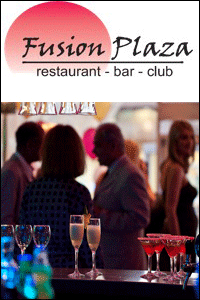
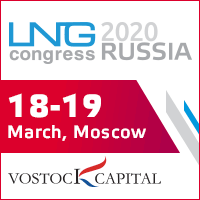
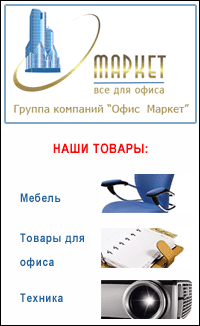


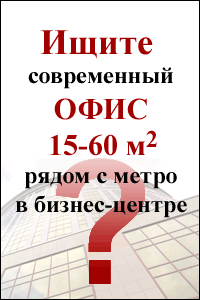

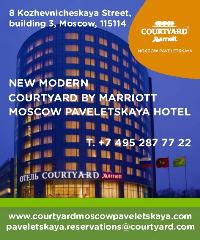

 Web design,
Web design,